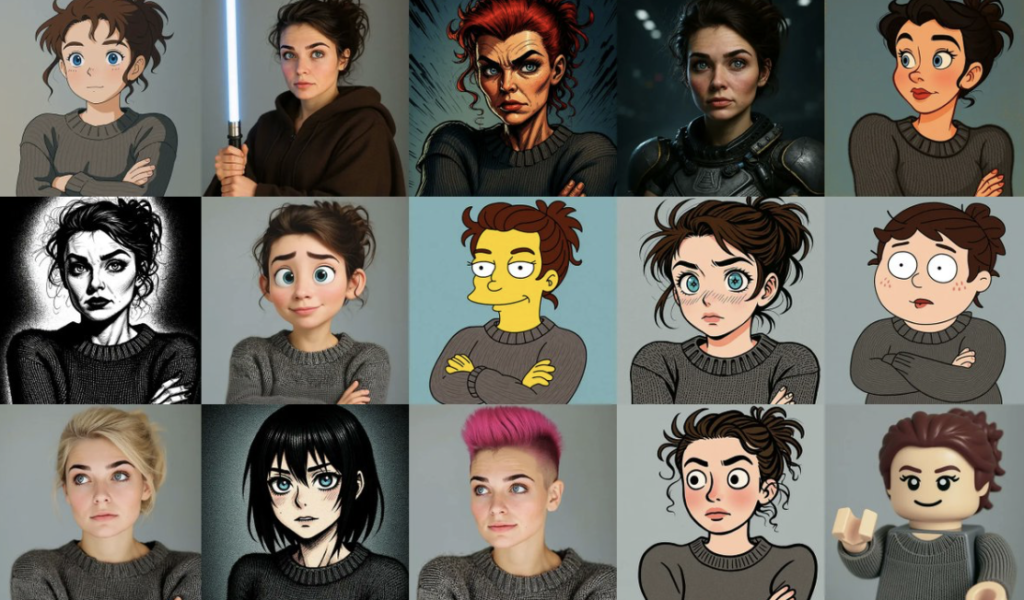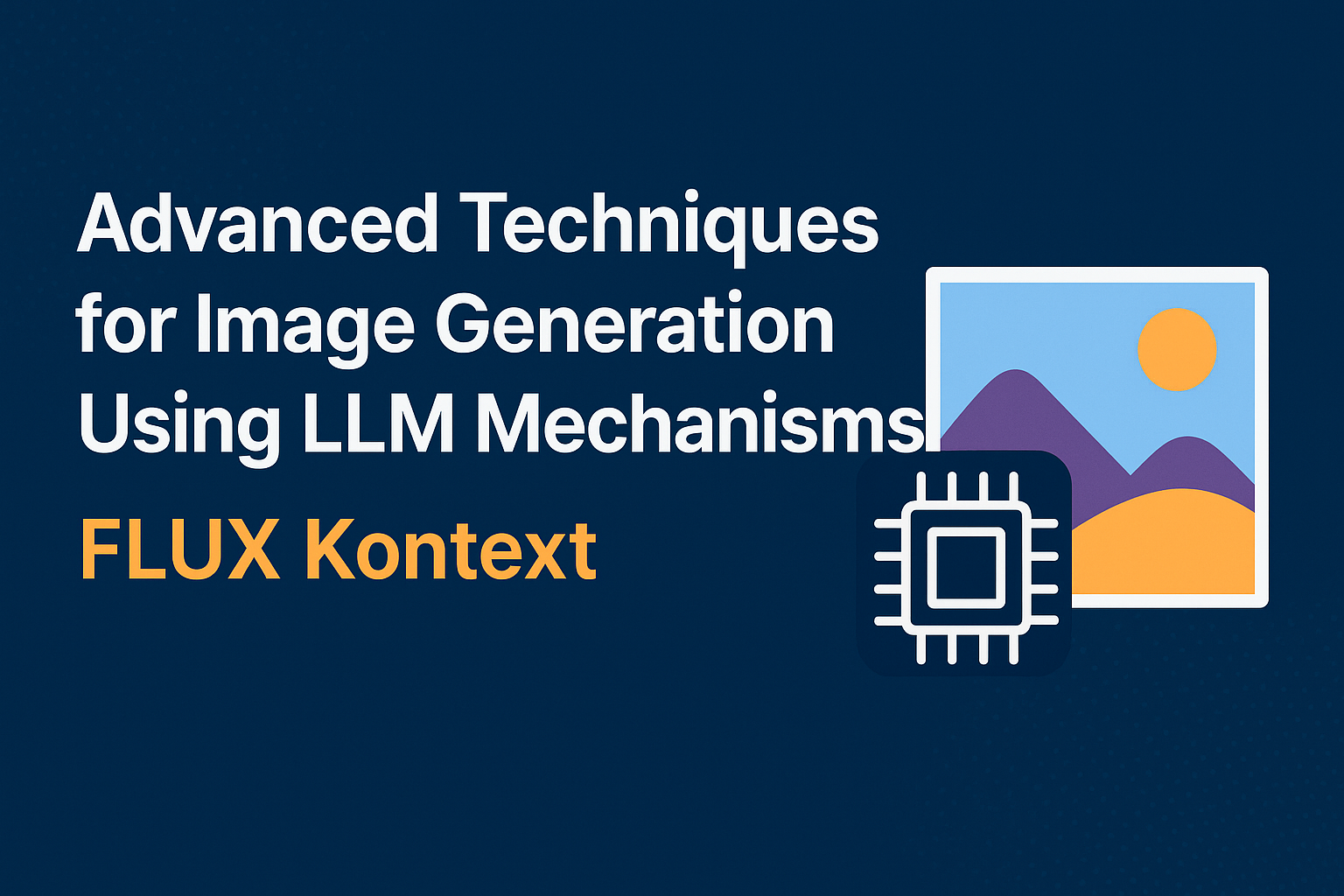In recent years, the boundary between large language models (LLMs) and generative image models has become increasingly blurred. Modern architectures, such as FLUX Kontext, demonstrate that natural language reasoning can be effectively leveraged to produce high-fidelity, contextually accurate images. In this article, we’ll explore the techniques behind LLM-driven image generation, why they differ from traditional diffusion or GAN approaches, and provide technical examples of how FLUX Kontext operates in practice.
Why Use LLMs for Image Generation?
Unlike traditional image generation models (e.g., Stable Diffusion, GANs, or VQ-VAEs), LLM-based mechanisms bring three unique advantages:
- Contextual Reasoning: LLMs are inherently strong in semantic reasoning. This allows them to understand multi-layered prompts (e.g., “generate an image of a futuristic city, but in the style of a medieval painting”).
- Unified Modality Space: With multimodal transformers, both text and image embeddings exist within the same latent space, enabling models to align language tokens and pixel representations more efficiently.
- Dynamic Prompt Adaptation: LLMs can refine, expand, or translate prompts internally, leading to outputs that remain consistent with the original intent, even if the input is ambiguous.
What is FLUX Kontext?
FLUX Kontext is an advanced LLM-driven image generation model that integrates language modeling capabilities with visual context alignment.

Unlike traditional diffusion pipelines, FLUX Kontext leverages:
- Transformer-based multimodal fusion: Text tokens and latent image tokens are processed within the same attention layers.
- Hierarchical context windows: FLUX dynamically manages “context blocks” so prompts can include narrative elements, object relations, or even physics-based reasoning.
- Cross-iteration refinement: Instead of pure denoising steps, FLUX Kontext refines outputs across multiple semantic passes, ensuring better prompt fidelity and visual coherence.
Core Techniques in LLM-Driven Image Generation
1. Semantic Tokenization of Prompts
Prompts are not only split into words, but into semantic graph structures. For example:
Prompt: "A red fox sitting under a cherry blossom tree at sunset."FLUX Kontext will tokenize this into entities and attributes:
- Object: fox (red, animal)
- Environment: tree (cherry blossom)
- Lighting/Time: sunset
This structured representation makes it easier for the model to anchor visual features.
2. Latent Visual Embeddings
The model maps tokens into a latent image embedding space. Unlike conventional CLIP-style embeddings, FLUX Kontext introduces a Kontext Fusion Layer (KFL) that aligns fine-grained textual semantics (like “red fur texture”) with localized latent patches in the image grid.
3. Iterative Context Refinement
Instead of a linear denoising schedule, FLUX Kontext applies context-guided refinement loops:
# Pseudo-code
latent = init_latent(noise)
for step in range(num_steps):
semantic_context = LLM_refine(prompt, latent)
latent = refine_with_context(latent, semantic_context)
image = decode(latent)This ensures that global semantics (scene composition) and local details (textures, colors) remain aligned across iterations.
4. Cross-Modal Attention Maps
Cross-attention layers allow the model to “paint” attributes onto the correct regions:
- “red fox” → localized to subject bounding box
- “sunset glow” → mapped to global lighting gradients
- “cherry blossoms” → distributed in tree canopy regions
This attention-driven mapping is key to maintaining visual coherence.
Technical Example: Using FLUX Kontext
Below is a simplified Python example of how FLUX Kontext could be used in practice:
from flux_kontext import FluxModel, FluxTokenizer, FluxPipeline
# Load model
model = FluxModel.from_pretrained("flux-kontext-base")
# Tokenize prompt
tokenizer = FluxTokenizer()
prompt = "A cyberpunk samurai walking through neon-lit Tokyo streets, cinematic lighting"
tokens = tokenizer.encode(prompt)
# Generate image
pipeline = FluxPipeline(model)
image = pipeline.generate(tokens, steps=30, guidance_scale=7.5)
# Save output
image.save("cyberpunk_samurai.png")Key parameters here:
- steps: Number of refinement iterations.
- guidance_scale: Degree of adherence to semantic context.
- tokens: Rich, structured input generated from the prompt.
SEO Keywords to Optimize For
- LLM image generation
- FLUX Kontext model
- AI-driven image generation techniques
- semantic tokenization in AI art
- cross-modal attention for image synthesis
- multimodal transformers for image generation
Conclusion
LLM-based models such as FLUX Kontext represent a paradigm shift in image generation. By merging semantic reasoning with visual synthesis, they produce outputs that are not only photorealistic but also contextually nuanced. As the boundaries between text and image generation continue to dissolve, models like FLUX Kontext pave the way for next-generation AI creativity platforms, where language truly becomes the brush.
